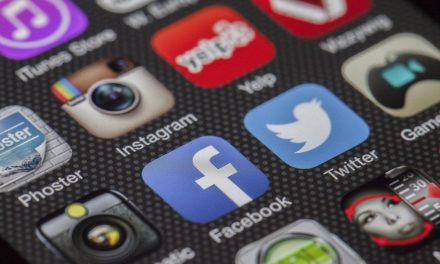
We have discussed the benefits of AI in another article, but ChatGPT has accelerated a lot of the debate that already existed about AI content replacing human copywriters. Suddenly, the once futuristic concept of machine-written copy seems very much – even dangerously – closer. [See the end of this article for the same title written by AI.]
Businesses are already using AI content in digital marketing to process vast amounts of data, identify patterns and segment audiences based on behavior and personal preferences. This turns the old A/B testing model into an A-Z model (and beyond) by creating hundreds of thousands of testable ads without the spend. That’s great, but we’re talking about copy.
In fact, AI is also at work on commercial copy and has been for some time. Chatbots are familiar to most of us and many companies are offering AI solutions for short copy such as ads and headlines. As long ago as 2018, Lexus released an ad scripted entirely by an AI using a training base of 15 years’ worth of successful car ads.
How it works
Such AI writing systems use natural language processing (NLP) and natural language generation (NLG), to write ad copy that supposedly looks the same or better than human copy but which is much faster and considerably cheaper. It does this by breaking sentences down into words and assigning specific marketing values to words.
For example, an ad for a clothing eCommerce company might use processed data to assign such values as discount, newness, excitement, material, exclusivity, scarcity, percentage, brand, color, garment type, season and quality. Each word or phrase in the ad would embody these values and could be tailored per audience segment. One of the following ads texts was written by a human copywriter and the other by an AI given the same information. Can you guess which is which?
A) Say hello to spring with 30% off our amazing range of multi-colored denim jackets – only until 30 March.
B) Spring is here and we are excited to offer a range of amazing coloured denim jackets for spring with a 30% discount. Discount ends March 30.
The first one was written by a human. You may think that one is better than the other. There are some nuances. Is the second a little less friendly? A little less human? There are different copywriters just as there are more or less effective AI systems, so there are hundreds of ways to write ads. Both of the above examples convey fundamentally the necessary information.

Should copywriters welcome AI content?
As a copywriter, I’ve spent days writing hundreds of almost identical ad texts that follow a very similar formula and adhere to strict word counts. It’s very boring and disheartening work for a human that an AI could do in a fraction of the time with virtually the same results. As in the previous examples, the main task is to cover certain values and tick certain boxes. Creativity is only a tiny part of what is primarily a mechanical writing task focused on grammar, keywords and word limits.
AI can produce headlines, ads, short descriptions and even blog posts much faster and therefore much cheaper than humans. It makes sense for machines to do this heavy lifting. Presently, however, it makes sense to have a human copywriter take a look at the AI copy just to check and/or correct it. Most AI copy-generating companies do this, even if they don’t mention it in their offer.
Example B above, for example, mentions “spring” and “discount” twice. Some might argue that repetition is good, but not within 26 words! We could change those redundant terms to something more effective. There’s also the question of tone, which is where it all starts to get trickier.
Many brands have a defined tone of voice (TOV), which might be more difficult for an AI to replicate. You can instruct the AI to use a friendly or formal or professional tone, but preparing it to replicate a specific brand TOV is more difficult. True, you could ask the AI to write “in the style of” a certain brand. ChatGPT can do this. But at what point does the text become a pastiche or a parody of the brand TOV, which is supposed to be a foundation for creativity rather than a prescription?
The problem with AI content
The whole debate comes down to whether humans can do something AI’s can’t – or at least do it better in a way that matters to the audience. I’ve suggested that AI is currently most useful for producing short, repetitious and formulaic copy such as headlines and ads. But what if you want creativity as well as hooks in your headlines? Here’s a combined list of AI-generated and human-generated headlines about those spring jackets. Can you differentiate them?

1. Spring into spring
2. Your perfect spring jacket
3. Get 30% off now!
4. Colored-Denim Discounts
5. Get springy with 30% off
6. Color your spring
7. Spring jackets on sale
8. What’s your color?
9. Get 30% off spring jackets
10. Dazzling denim discounts
The even numbers are the human ones. Do you see any difference? Have you got a favorite? In the context of a short ad headline, the difference may be negligible or debatable. What attracts the consumer most persuasively – the color range, the jacket garment or the discount? Since the ad is also probably accompanied by a photo and description, there’s arguably not a vast amount at stake here. This isn’t a whole multi-platform campaign focused on the jackets – just one of 50 ads run at the same time.
The problems with AI tend to come with longer copy – problems that can be reduced to narrative, creativity and personality. The reason that AI has so far failed to write a convincing novel is that narrative is difficult. Story is difficult. AI can beat a chess grandmaster, but it can’t write even a passable short story because narrative doesn’t work according to finite combinations of possible moves.
AI and narrative
Good narrative means organic connection. Sentences link to other sentences, sentences to paragraphs and paragraphs to pages. The narrative line can be unbroken, split into multiple strands or even fold in on itself before coming to a conclusion. AIs recognise grammar and blocks of text, replicating them in orders already seen in training texts. They don’t think in terms of unifying or satisfying narratives.
The multiple millions of texts that AIs reference have their own internal narratives. Applying a new coherent narrative to already-written multiple extracted pieces is difficult. The longer the text, the more obvious the lack of persuasive flow. Paragraphs can seem discrete: a series of points on a theme, but not necessarily an idea developed from start to finish. It’s information, but not a journey. Narrative guides the human writer, on the other hand, who creates the text to suit – completely the reverse process.
Good narrative can keep a reader interested for a long time. The average novel has more than 70,000 words, for example. AI texts tend to be flat as reading experiences: an accumulation of more-or-less accurate statements or facts but not a conversation with the subject. AI can write a great summary, but journeys and stories are what teach, inspire and change minds.
AI and creativity
What is creativity? Nothing is created from a void. Even the most original artists were inspired by and trained on the art that went before them. If they broke the rules, it was because the rules already existed. If they innovated, it’s because there was something old. AI bases its “creations” on everything it has seen before – potentially more than any human has read.
The difference is experience and personality. AI brings nothing to its work but algorithms and machine learning. It does not have a personal opinion, a sense of humor or a specific educational profile. It would not replicate the same references and language of a person with specific life experience (unless, perhaps, it had access to a large amount of text written by that person).
Artificial intelligence, by definition, is imitative and repetitive. It reconstructs what has already been written. In this sense, we might ask whether it is capable of producing any new or original insights into a subject. Can it give examples other than the examples already given? Can it surprise or delight an audience it can’t know or empathize with, but merely recognize as something “in the style of?”
AI and personality
Here, we pick up on an idea introduced seven paragraphs ago (something you won’t see in an AI narrative!) Personality is necessarily something personal and unique, but how is that seen in copy? As I’ve suggested, it’s in the frames of reference and experience – but it’s also in the rhythms of the text.
AI necessarily homogenizes its texts and imposes a uniform tone on diverse and multiple sources. It controls the length of its sentences and grammatical forms according to set models so that the eventual copy is “dead.” Whereas humans think of language as communication, the AI considers it information. Communication is reactive, perceptive, empathetic and mobile. It has expressions and emphasis. Information just is.
That’s why most AI copy is dull. Sure, you’ll find the facts you may be looking for, but you won’t enjoy the process. Reading it is a procedure. The language exists as subsets arranged as sentences without humor, subtext, implication, subtlety or variety. (We can also say the same about AI-driven correction tools, that reduce everything to brutal grammar.)
AI content and humans
It’s very possible that AI will learn to do all of these things it currently can’t. Maybe the world’s greatest novel will be produced by an AI that has read and understood everything – the end of literature as we know it.
As for copywriting, AI is great for accessing and processing huge amounts of information to save us time and money. It’s also very good at writing short, formulaic texts such as ads and headlines (with a little human help).
A final thought: the client is the person who decides on the final copy. AI might write the most statistically and linguistically perfect text with a projected 98% success rate, but if the client doesn’t like it . . . Copywriters still have the advantage of being able to talk to clients to discover exactly what’s required, either by getting a detailed brief or by reading between the lines – something AI will never be able to do.
Grammarly (human) score: 82
AI-written version of the same article:
“Write a blog post in the style of a LinkedIn article with the title “Will AI replace human copywriters in digital marketing?”
It’s no secret that artificial intelligence (AI) is transforming the digital marketing landscape. With advancements in AI technology, marketers are now able to automate certain tasks, such as customer segmentation, content curation, and lead scoring. But one area where many marketers are still hesitant to fully embrace AI is in the realm of copywriting.
The question then becomes: will AI replace human copywriters in digital marketing? To answer this question, we must first understand how AI works, and what its potential implications are for the future of digital marketing.
At its core, AI is a type of computer program that can learn, grow, and adapt to its environment. In digital marketing, AI is used to analyze data, detect patterns, and create content. For example, AI can be used to generate copy that is tailored to a specific customer segment or to identify the best time to send an email.
The potential benefits of AI for digital marketing are clear. AI can help marketers save time and money by automating mundane tasks, and it can generate content more efficiently than its human counterparts. However, AI is not a perfect solution. It can’t create content with the same level of creativity and nuance as a human copywriter. Additionally, AI systems can be prone to errors and have difficulty understanding the nuances of human language.
Will AI replace humans?
Ultimately, it’s unlikely that AI will fully replace human copywriters in digital marketing. While AI can be used to automate certain tasks and help marketers save time and money, it’s unlikely that AI will be able to create content with the same level of creativity and nuance as a human copywriter.
That being said, AI can still be a valuable tool for digital marketing. By automating mundane tasks, AI can free up copywriters to focus on the creative aspects of content creation. Additionally, AI can analyze data and identify patterns, giving marketers an edge when it comes to creating content that resonates with their target audience.
In conclusion, AI may not be able to fully replace human copywriters in digital marketing, but it can still be a valuable tool for marketers. By automating mundane tasks and helping marketers analyze data, AI can help marketers create content more efficiently and effectively.
Grammarly (AI) score: 86 [NOTE: I had to add a subheading to the AI version and remove some passive voice because it was negatively affecting the SEO rating]










